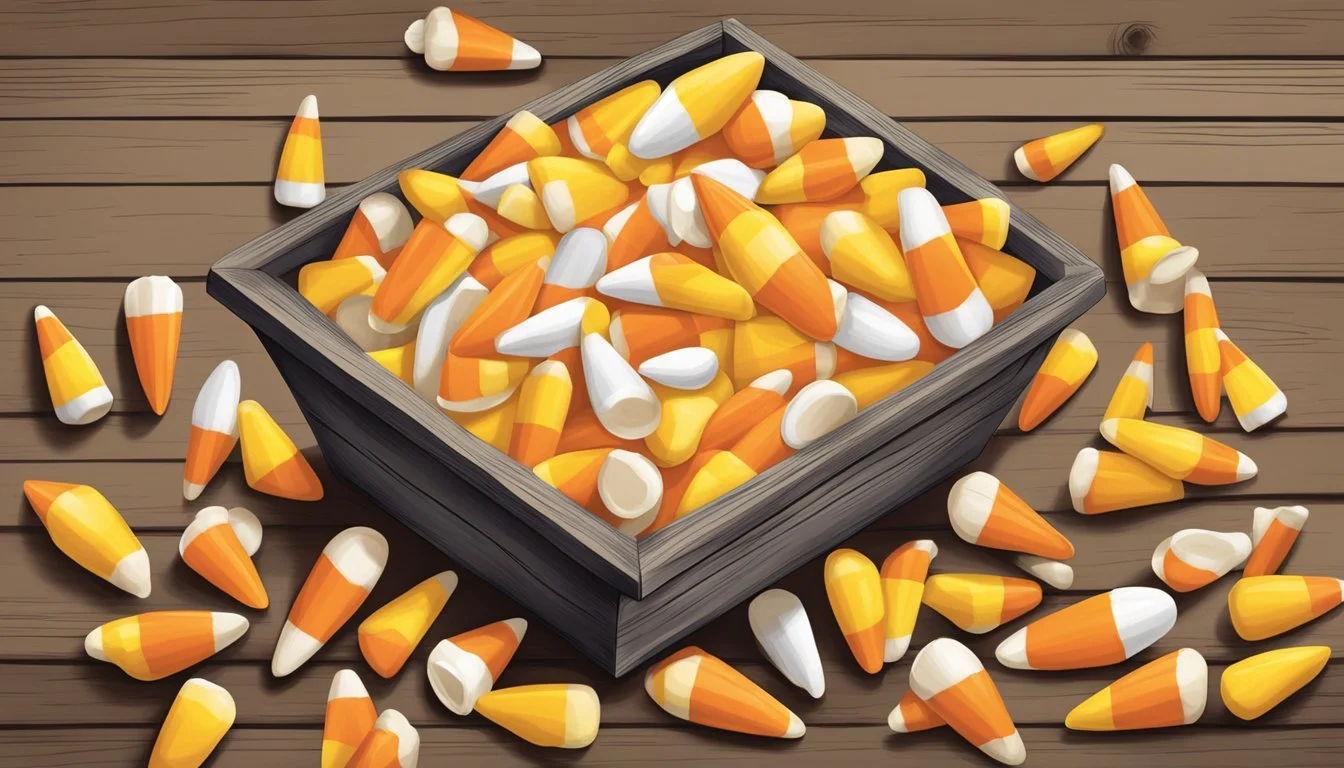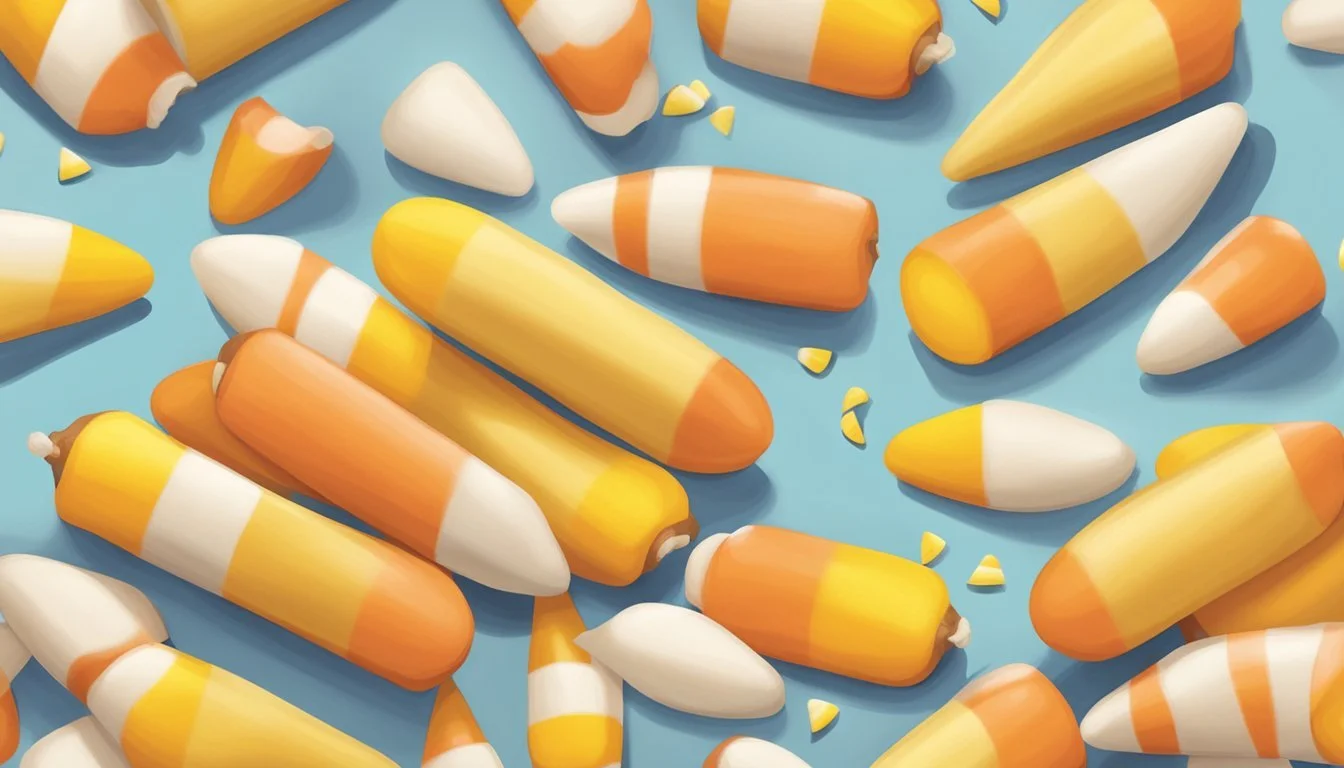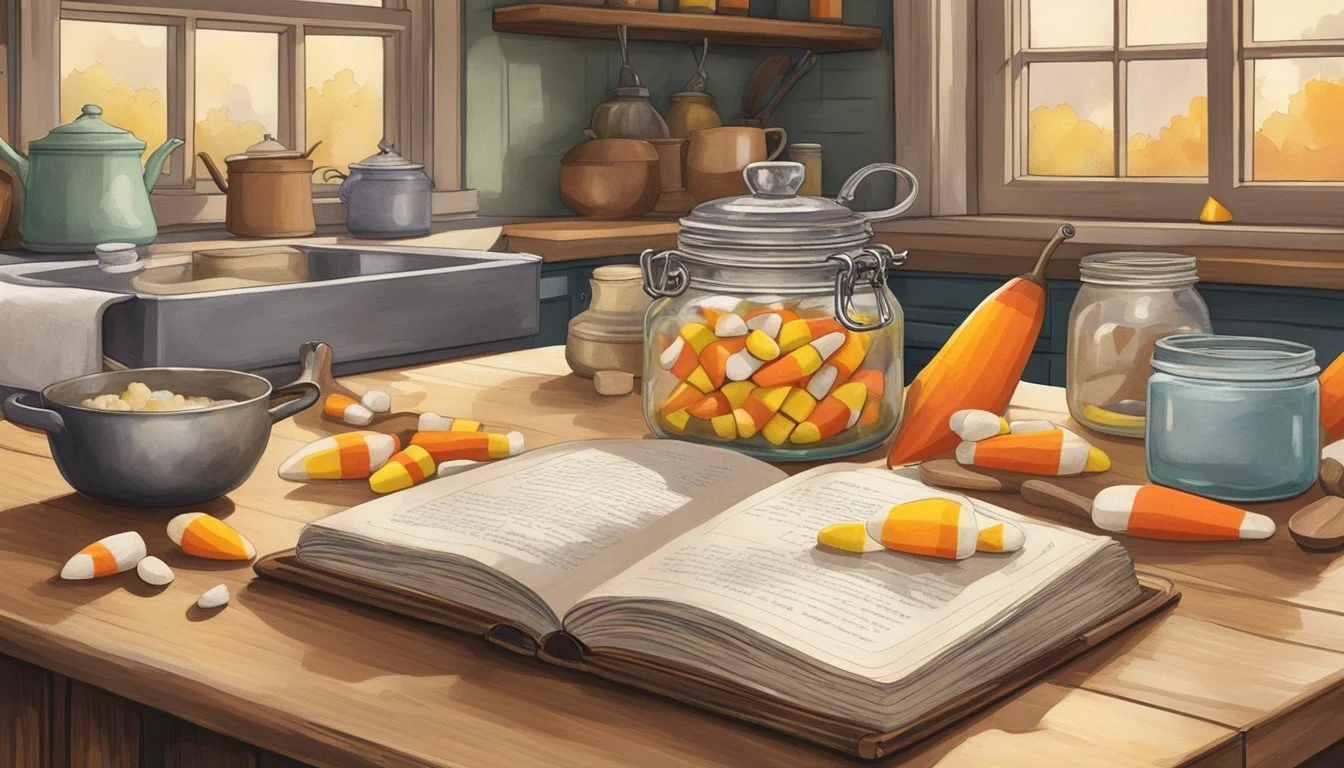10 Things You Didn't Know About Candy Corn
Surprising Facts Revealed
When it comes to Halloween treats, candy corn stands out as an iconic and divisive confection. Whether adored or despised, its tri-colored design and sweet flavor are unmistakable. Despite its common presence in stores and homes during the fall season, many aspects of candy corn's history and production remain unknown to most people.
Why has candy corn maintained such enduring popularity over the years? Beyond its colorful appearance, this seasonal treat boasts a fascinating backstory and intriguing trivia that enthusiasts and skeptics alike may find surprising. Dive into the lesser-known facts about candy corn and discover what makes this humble candy so memorable each Halloween season.
1) Candy Corn Was Originally Called 'Chicken Feed'
Candy corn, now a Halloween staple, was not always associated with the spooky holiday. When it was first introduced, it was known as "Chicken Feed." This quirky name reflected its agricultural roots and the target market of rural America.
In the late 19th century, the Goelitz Confectionery Company began producing these tricolored treats. At that time, corn was a common livestock feed, hence the name "Chicken Feed." The boxes even featured a rooster logo to emphasize this connection.
The original packaging made it clear that candy corn was intended as a seasonal treat, available primarily in the fall. Despite its humble beginnings, candy corn gradually made its way from general stores to become a timeless candy favorite.
2) Candy Corn Has Been Around Since the 1880s
Candy corn, a popular treat during Halloween, dates back to the 1880s. Created by the Wunderle Candy Company, it was originally marketed as "Chicken Feed" due to its resemblance to corn kernels.
The recipe and appearance have remained largely unchanged since its inception. Comprising sugar, fondant, corn syrup, vanilla flavor, and marshmallow creme, the ingredients are melted into a liquid candy and molded into the iconic kernel shape.
Each kernel of candy corn is made by layering white, yellow, and orange colors, giving it its recognizable striped pattern. Initially crafted by hand, the production process has since been mechanized, but the timeless appeal of this nostalgic confection remains consistent with its origins.
3) The Tricolor of Candy Corn Represents Harvest
The iconic tricolor of candy corn—yellow, orange, and white—holds symbolic significance. These colors were deliberately chosen to reflect the fall harvest season.
The yellow layer represents the kernels of corn, a staple of harvest time.
Orange symbolizes the changing leaves, a hallmark of autumn.
White was initially included to mimic the color of corn kernels' tips but also adds to the visual appeal.
This visual representation enhances candy corn's association with Halloween and the fall season. This association has greatly contributed to its popularity during this time of year.
Candy corn’s tricolor design is not just a random choice but a thoughtful nod to agricultural traditions and the beauty of autumn.
4) Brach's is the Top Producer of Candy Corn
Brach's is undoubtedly the leading manufacturer of candy corn, producing a significant portion of the candy sold in the United States. The company makes an astonishing 30 million pounds of candy corn each year. This large-scale production helps meet the high demand, especially during the Halloween season.
Founded in 1904 by Emil J. Brach, the company has maintained its reputation for quality and variety in the confectionery industry. They have expanded their candy corn offerings to include various flavors and seasonal themes, which keeps consumer interest alive.
Brach's commitment to innovation is evident in their new products. Flavors such as kettle corn, caramel apple, and strawberry funnel cake have added a fresh twist to the classic candy. This diversification has made it easier for Brach's to maintain its market dominance.
The brand's influence extends across the United States, with certain regions showing particular affection for their candy corn. States like Michigan are noted for their high consumption despite not being the most populous. This regional popularity underscores Brach's significant impact on the candy corn market.
5) National Candy Corn Day is October 30th
National Candy Corn Day, celebrated annually on October 30th, honors the iconic tri-colored candy known for its association with Halloween.
The day is a tribute to the seasonal treat that has become a staple of autumn festivities.
George Renninger of the Wunderle Candy Company originally developed candy corn in the late 1800s.
This celebration coincides with the height of Halloween preparations, making it a fitting time to enjoy this beloved snack.
Millions of people indulge in candy corn during this period, often consuming it by the handful.
National Candy Corn Day garners attention across various media platforms, with events and promotions highlighting its nostalgic charm.
The National Confectioners Association recognizes this day to celebrate the production of candy corn, estimated at 9 billion pieces annually.
From store displays to festive parties, candy corn is ubiquitous during this time of year.
As part of the festivities, some enthusiasts even incorporate candy corn into recipes and decorations, adding to the allure of the holiday season.
6) Candy Corn Contains Honey
Candy corn is recognized for its distinct layers of yellow, orange, and white. Often, there's confusion about its ingredients. Contrary to some beliefs, candy corn does contain honey.
Traditional recipes for candy corn typically incorporate a mix of sugar, corn syrup, and honey. This inclusion of honey contributes to its iconic, sweet flavor.
Honey is commonly used in candy making for its unique taste and texture. In candy corn, honey enhances the overall sweetness and provides a hint of its characteristic flavor profile.
People might associate the honey-like taste with other ingredients in candy corn. Nonetheless, the actual honey content adds to the nostalgic and beloved taste of this seasonal treat.
7) Candy Corn Was Once Made by Hand
In the early days of candy corn production, each piece was meticulously crafted by hand. This labor-intensive process required skilled workers to pour the three separate layers of colored syrup into molds.
Back then, the mixture would be heated in large kettles and ladled into wooden trays filled with cornstarch molds. These molds were imprinted with the shape of each candy kernel.
The production was slow and required great attention to detail to ensure the layers of white, orange, and yellow were poured evenly. This manual process meant that candy corn was not made in large quantities like it is today.
Workers had to handle the hot liquid candy with precision, making sure each mold was filled accurately. This method remained in practice until advances in technology allowed for mass production, transforming candy corn into the Halloween staple it is now.
8) Candy Corn is Fat-Free
Candy corn may be a sweet treat, but it is surprisingly free of fat. This candy, primarily composed of sugar and corn syrup, does not contain any fats in its nutritional profile.
Despite its high sugar content, it can be an option for those looking to avoid fat in their diet. Each serving of candy corn, typically about 19 pieces, contains zero grams of fat.
The absence of fat makes candy corn a unique option compared to many other candies that often contain fats from ingredients like chocolate or nuts.
Even though candy corn is fat-free, it's important to consume it in moderation due to its high sugar levels.
9) Candy Corn Can Last Over 9 Months If Stored Properly
Candy corn has a surprisingly long shelf life when stored correctly. If kept in an unopened package, it can last for about 9 to 12 months. The key to maintaining its freshness lies in proper storage techniques.
Store candy corn in an airtight container to prevent moisture and air from affecting its quality. A cool, dry place is ideal for keeping the candy in good condition over time.
Refrigeration can extend its shelf life to about 6 to 8 months, but freezing it in airtight containers or heavy-duty freezer bags can keep it fresh for up to a year.
It's important to monitor candy corn for signs of spoilage, such as mold growth, off-odor, or changes in texture. If these signs are present, it's best to discard it.
With the right storage practices, candy corn can remain a delightful treat for months.
10) Candy Corn's Recipe Hasn't Changed Much in 100 Years
Candy corn's recipe has remained remarkably consistent since its creation in the late 1800s. Initially crafted by hand, workers poured each colored layer separately into kernel-shaped molds. Modern automation now performs this task, but the basic ingredients are still the same.
The core components—sugar, corn syrup, and water—are mixed in large vats to form a sugary slurry. Fondant and marshmallow are added to give the candy its smooth texture. This mixture is then poured into molds to harden into the familiar kernel shape.
Despite technological advancements, the taste and texture of candy corn have been kept largely the same. This consistency has helped maintain its nostalgic appeal over generations. Intricate changes to the manufacturing process have streamlined production, yet the end product remains closely tied to its original recipe.
History And Origins
The story of candy corn begins in the late 19th century. Throughout the decades, its production and association underwent notable changes, transforming it into a beloved seasonal treat.
Early Beginnings
Candy corn was first invented by George Renninger, a confectioner at the Wunderle Candy Company in Philadelphia. This innovative treat, originally named "Chicken Feed," made its debut in the 1880s. Before it became associated with Halloween, it was targeted at agricultural communities because of its resemblance to kernels of corn.
The candy was made from sugar, corn syrup, and other ingredients. These components were poured in layers to create the iconic tri-color design of white, orange, and yellow. Despite its simple ingredients, it quickly became popular across the United States as a penny candy.
Evolution Over Time
By the mid-20th century, candy corn had cemented its place as a Halloween staple. This transition began when the Goelitz Confectionery Company started mass producing it and marketing it for the fall season. The association with Halloween candy increased its popularity and firmly entrenched it in the holiday tradition.
Modern production of candy corn utilizes similar ingredients but with improved technology for efficiency. Companies maintain the traditional recipe while ensuring consistent quality and mass production to meet the high demand during Halloween. Though there have been changes, the essence of candy corn remains unchanged, continuing its legacy as a nostalgic and festive treat.
Chemical Composition
Candy corn is composed of several key ingredients, each serving a specific purpose in creating its unique texture and flavor. The manufacturing process combines these ingredients through precise heating and molding techniques.
Primary Ingredients
The primary ingredients in candy corn include sugar, corn syrup, confectioner’s glaze, dextrose, gelatin, and honey.
Sugar and corn syrup form the basic structure, providing the candy's sweet taste.
Confectioner's glaze (also known as shellac), derived from the lac insect, gives candy corn a shiny exterior.
Dextrose, another type of sugar, contributes to the overall sweetness.
Gelatin helps in binding the ingredients together, ensuring the chewy texture.
Honey adds a slight flavor complexity.
Each of these components is carefully measured and mixed to maintain consistency in flavor and texture.
Manufacturing Process
The manufacturing process of candy corn begins with combining the primary ingredients in large kettles.
The mixture is heated until it becomes a smooth, homogenous syrup.
Once the syrup reaches the desired consistency, it's poured into molds shaped like kernels of corn.
The molds are then cooled, allowing the candy to harden.
After cooling, the pieces are coated with a thin layer of confectioner's glaze, giving them their distinctive shine.
This method ensures that every piece of candy corn has the same iconic tri-color appearance and sweet, mellow flavor.





